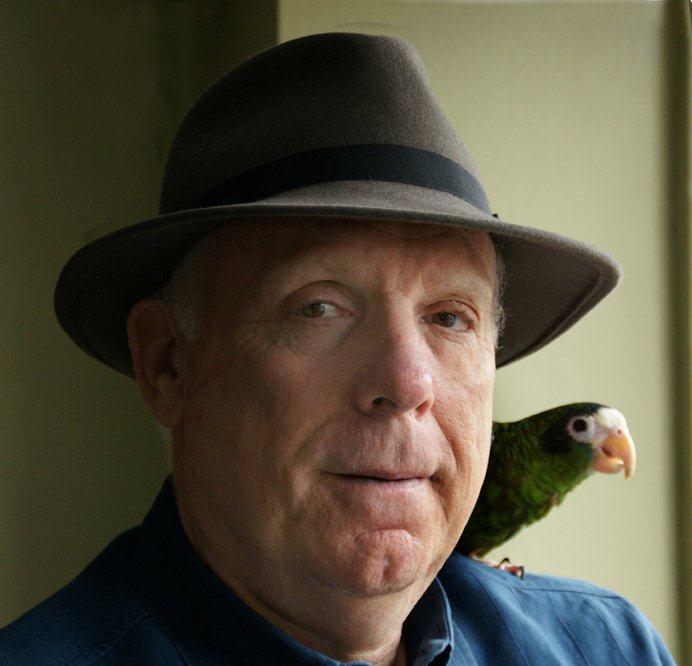
Just a year after I founded NFTE, The Network for Teaching Youth Entrepreneurship, Newsday sent this imposing man, Paul Wisenthal, to write a story on youth entrepreneurship. It was 1989. At the time, NFTE could barely meet the rent for its rat-infested storefront office on Fulton Street. Paul helped change all that by writing over 10 stories on our work which generated numerous awards, including a Pulitzer Prize nomination.
The son of a wealthy Jewish shoe manufacturer from Montreal, Paul had a colorful resume. By the time I met him he'd covered illegal arms trafficking for the Canadian Broadcasting Company (CBC), he'd been imprisoned in Beirut while on assignment for ABC following the Sabra and Shatila Massacre that claimed up to 3,000 lives, and while on assignment for Mike Wallace of 60 Minutes, he spent one month with Dr. Gerry Bull, the Canadian boy wonder/mad scientist who was later killed by the Mossad (Israel's secret service) while on the verge of sharing Howitzer gun technology with Saddam Hussein.
Paul had his demons too. But as things turned out, Paul's demons were eventually transformed into angels. Well, maybe not angels exactly, but let's just say that confronting his demons led Paul to discover his passion: writing about the problems of troubled kids, giving them a voice, and helping them turn their lives around. There was 17-year-old Kathleen Gonzalez of Manhattan who was diagnosed with Lupus, who started her own business (with the help of NFTE), designing and selling jewelry even while undergoing critical treatment for her disease; there was 16-year-old Jamie Morales of San Pedro, California, who lost her grandfather, uncle, and mother to AIDs and used the experience to educate hundreds of thousands around the country about the disease; and there was Chaille Stovall, who, despite an ADD diagnosis, by age 11 had won first prize at the Miami Children's Film Festival in 1998 for his documentary Boys in Tights. A year later, Chaille secured an exclusive interview with George W. Bush at the start of his campaign, which later aired on an HBO TV special.
As a result of his groundbreaking articles about youth at risk, Paul has lectured at Columbia, Yale, Stanford, the Harvard Club, and the New York City Department of Education. He was the first person to explain to me the benefits of media as a tool to raise money or attract new clients to nonprofit organizations.
Now, at age 70, Paul continues with his passion. Quoting from another famous Canadian septuagenarian, Leonard Cohen, who uses the line onstage, Paul is fond of saying, "I have defied the odds by not dying." In fact, not only is he still alive and living in New York City, Paul runs up to four miles two or three times a week, and swims over 70 laps.
I recently caught up with Paul at the Good Stuff Diner, next to the McBurney YMCA on 14th Street in New York City, where he regularly works out, as he was preparing for his next workshop.
SM: Why are readers drawn to your stories?
PW: Readers identify with compelling stories of challenges overcome. They inspire people. For example, stories like Rodney Walker's, who was homeless for over four months and in 10 foster care homes in Chicago and today is in graduate school at Yale University studying business and divinity.
SM: What advice do you have for an organization that wants to get media attention?
PW: There are eight million compelling stories in the naked city. Most corporations are not even aware that their clients and staff have access to these stories. Editors and television producers are always open to a heart-rending, emotional tale about someone like Rodney who's done something significant with their life. Train and incentivize staff to identify compelling stories within the organization or its clients, write them up and pitch them to a community based media outlet.
SM: How can media help a social entrepreneur?
PW: It will build your brand in the community, help you raise money from funders, be a morale booster for your staff and become a lasting record of the organization's great work.
SM: How does working with social media differ from traditional media?
PW: Every organization has the ability to create a video or one-page pitch article about something that really is compelling about one or two individuals. If the story is compelling enough, either in video, photo or print form; there are blogging and internet websites that would love to use the material, since most sites are always looking for new and fresh material that will attract readers.
SM: What makes for a compelling story?
PW: A colorful character, a challenge overcome, a committed mentor or person who gave tirelessly of their time and support, a story that pulls at the heartstrings and makes you want to read more.

Paul and his pet Pooh.
Paul Wisenthal's stories have appeared in the New York Times, Daily News, Newsday, USA Today, National Geographic and Scholastic Magazines; and syndicated through the New York Times, Tribune Media, StreetBeat News and HotTopics. He produced more than 50 animation segments for Children Television Workshop's Sesame Street and 3-2-1 Contact. In addition to the Pulitzer nomination, Paul's work has been cited by the Southern Newspaper Publishers Association as the best product on addiction for middle schools.
